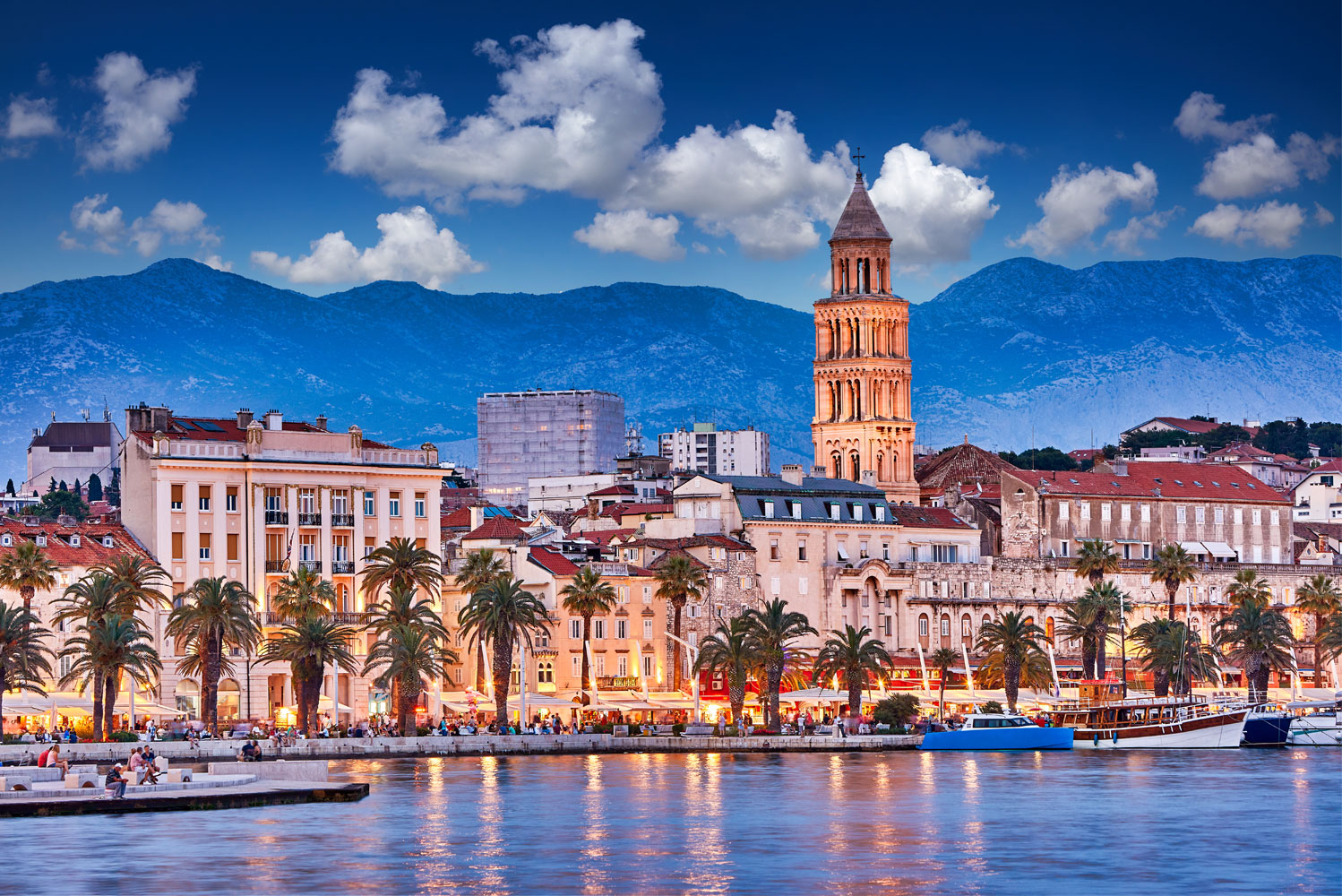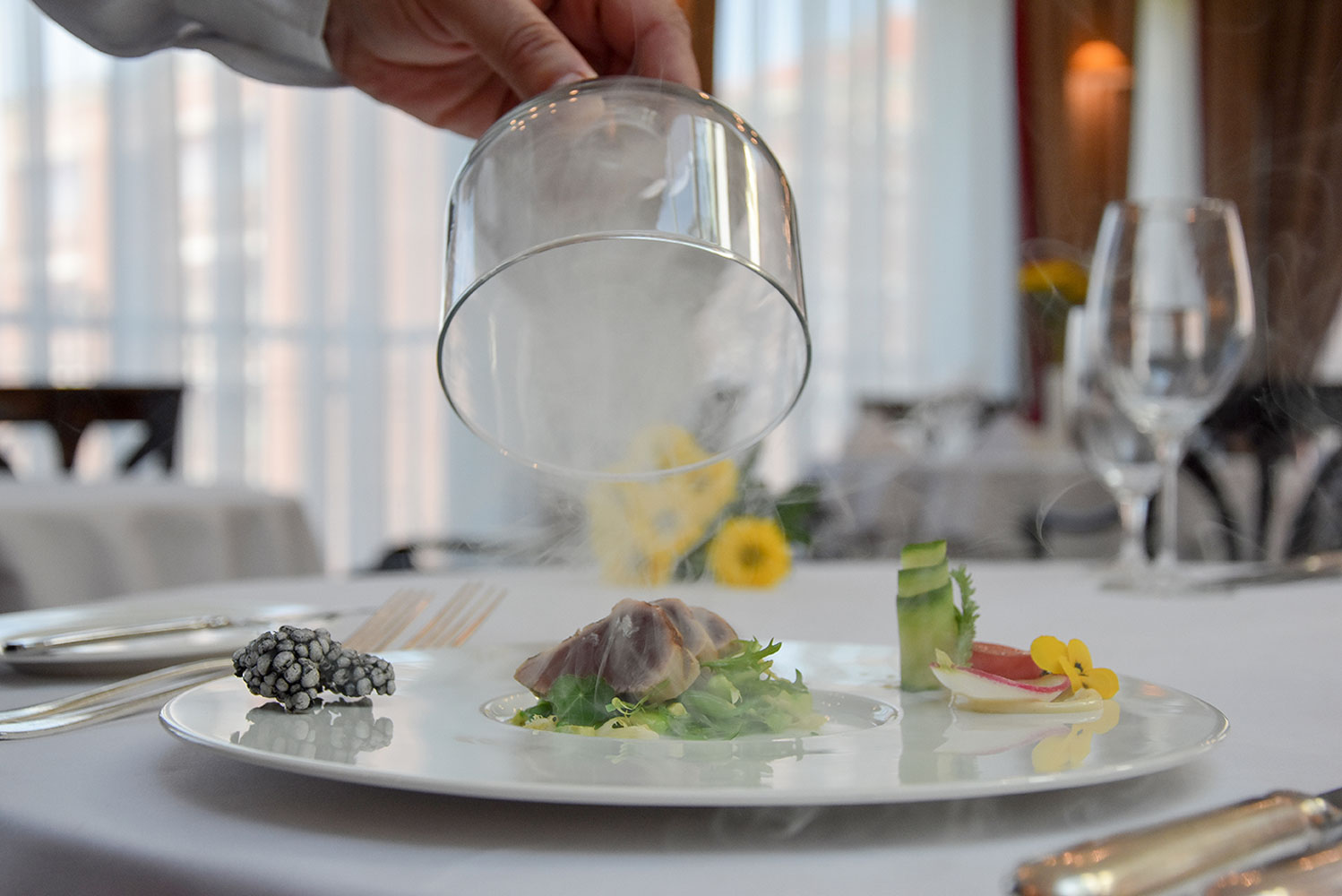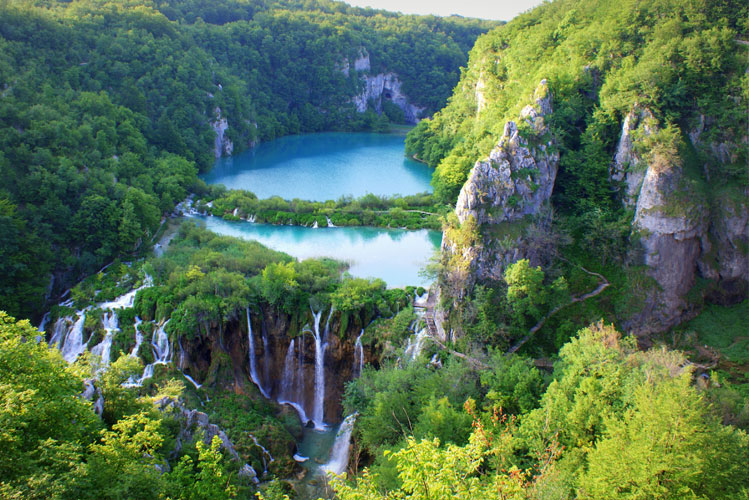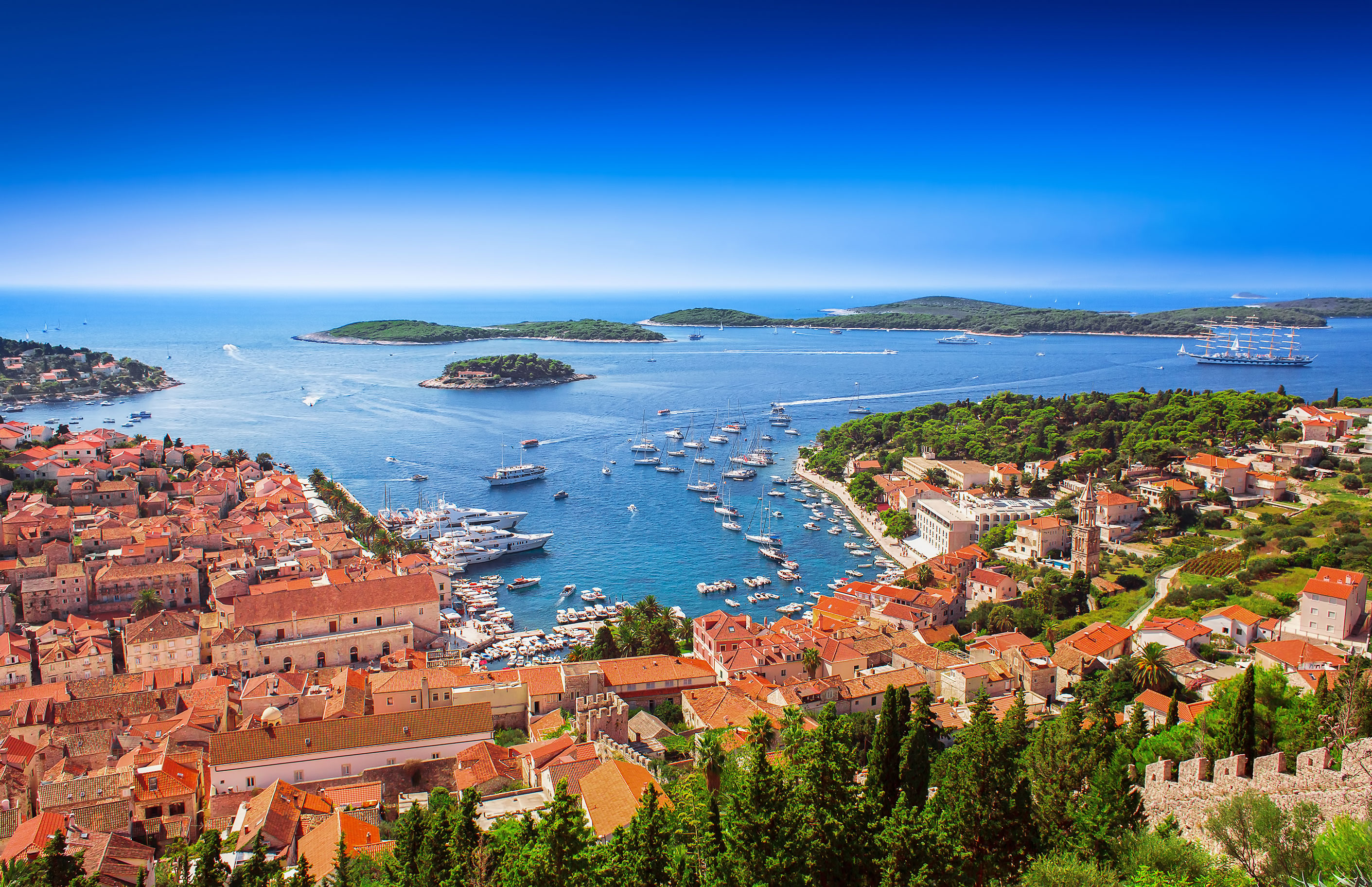15 Top Tourist Attractions in Dubrovnik
by Welcome Center Croatia | Last updated Feb 22, 2022 | Published on Feb 22, 2022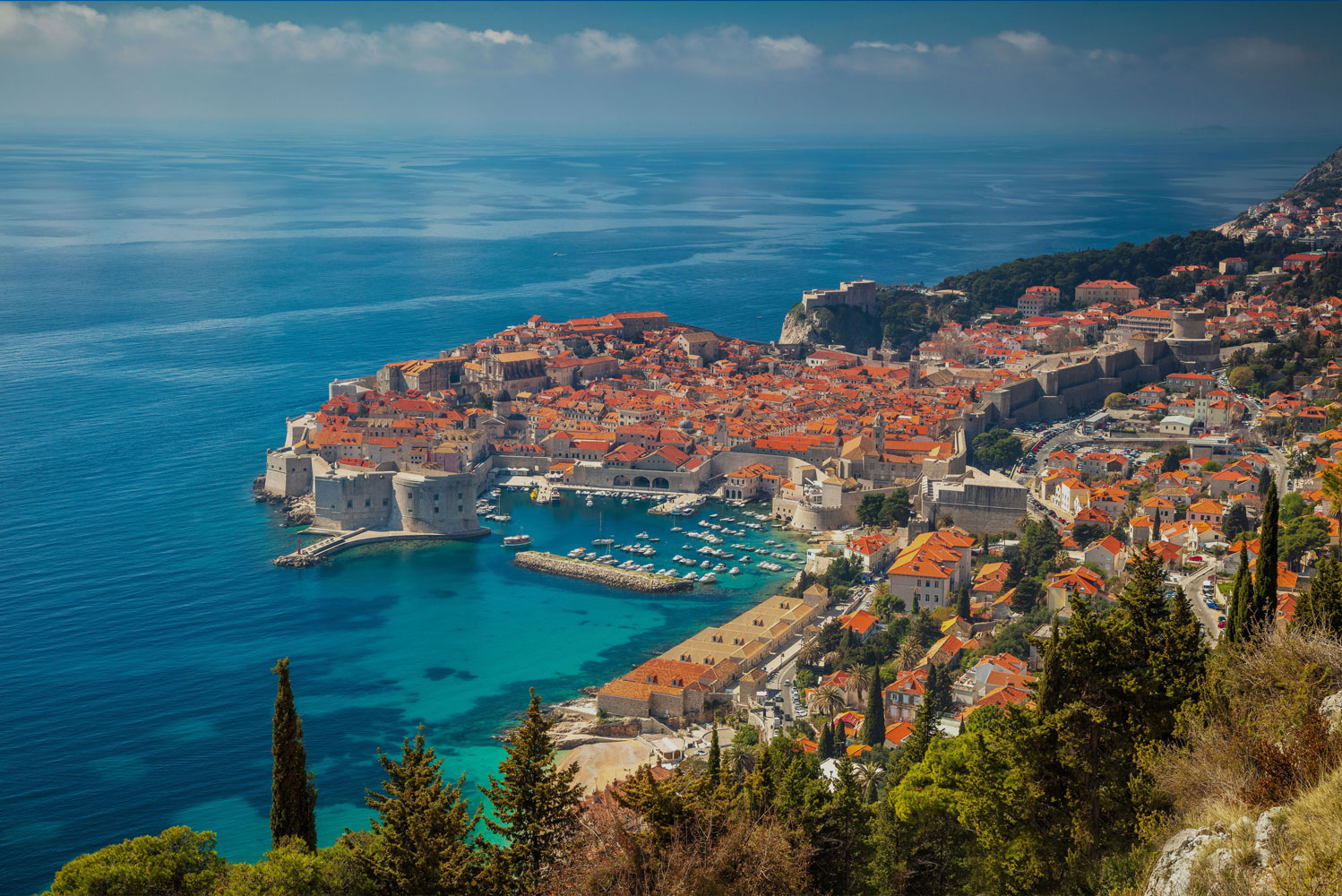
Content table
Also known as the 'Pearl of the Adriatic', Dubrovnik is a beautiful Croatian city that allows you a beautiful view into the 7th century. The city was initially ruled by Venetians and Hungarians, and one can see this from the various landmarks in the city. Besides the landmark in the city, visitors also get a shot at enjoying views of the Dalmatian Coast and participating in the country's cultural festivals and activities.
Dubrovnik is a city in Croatia that is famous for its medieval architecture. The city has been declared a UNESCO World Heritage Site, and it is one of the most popular tourist destinations in the country.
Some of the visitors' favourite sceneries include walking around the city, visiting museums and old churches, as well as enjoying the fortifications. As you tour the city, don't forget to carry your camera and get the most beautiful photographs. They are memories worth capturing. This article explores the 15 top tourist attractions in Dubrovnik.
1. The City Gates

For more than a hundred years, the Pile gate has been the major entry point to Dubrovnik.
It still serves as the most exciting entry point to the city. While in the city, you will get a glimpse of the St. Blaise statue carved by Metrovic Ivan, an infamous Croatian artist.
There is also another gate that dates back to the 14th century. The Ploce Gate is located just behind the exciting Asimov Tower.
It was initially designed as a double defence system and often proved a stronghold when there was trouble. You can also access the Revelin Fortress through this gate.
These two gates are so far the most exciting entrances to the city.
2. Walk through Stradun
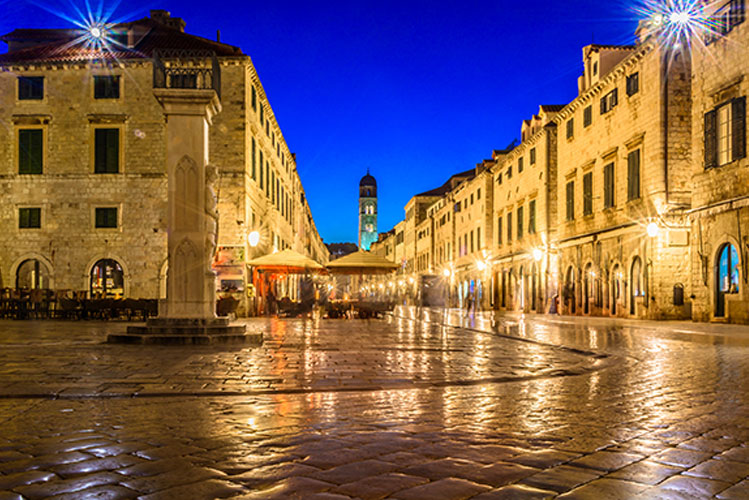
The experience of walking through Stradun in Dubrovnik, Croatia, will stay with you for a lifetime. The cobblestone streets and the old buildings are a sight to behold. Commonly known as Placa, this is where both locals and visitors gather day and night.
The Stradun is the main street in Dubrovnik, Croatia. It is lined with shops and restaurants on both sides. The buildings are all different colours and have different architectural styles. There are also many churches on the street, making it feel like you're walking through a museum of sorts.
It measures 300 metres and is popular for its limestone white paving. While most of the buildings in the area date back to the mid-17th century, most of the streets were developed and named in the 13th century.
While walking down Stradun in Dubrovnik, Croatia, there are many things to do. You can stop at any of the shops or restaurants to get something to eat or drink or take pictures of the beautiful architecture around you.
While walking through Stradun, you can also quickly pop into the War Photo Limited and see images from the olden days. It is a beautiful learning experience for everyone.
3. The Old City Walls
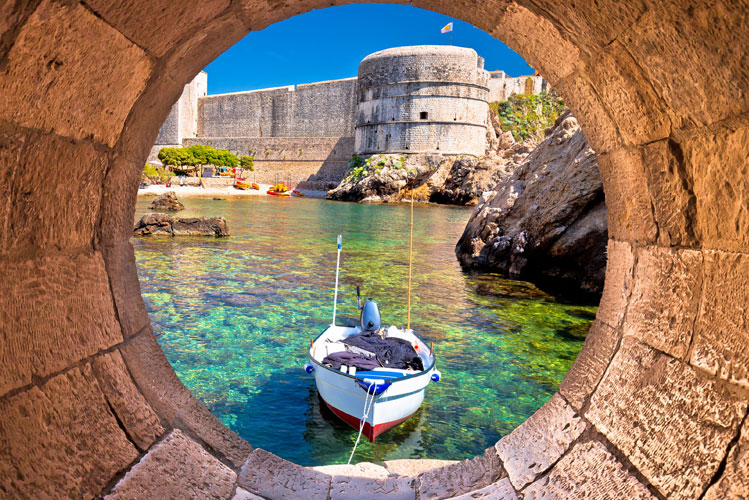
The Old City Walls are located on the eastern side of Dubrovnik, and they are surrounded by water on three sides. The walls were built to protect the city from invaders in 1272. They are about 6 metres high, 6 meters thick, 2 kilometres long, and have been preserved well over the centuries.
Today, the city walls are popular as featured in the 'Game of Throne' series. They were built in the 10th century and later revamped in the 13th and 14th centuries. They are a popular place to stroll and take beautiful photographs. While the charges to access the walls is high, it is always a worthwhile adventure.
4. Minceta Tower
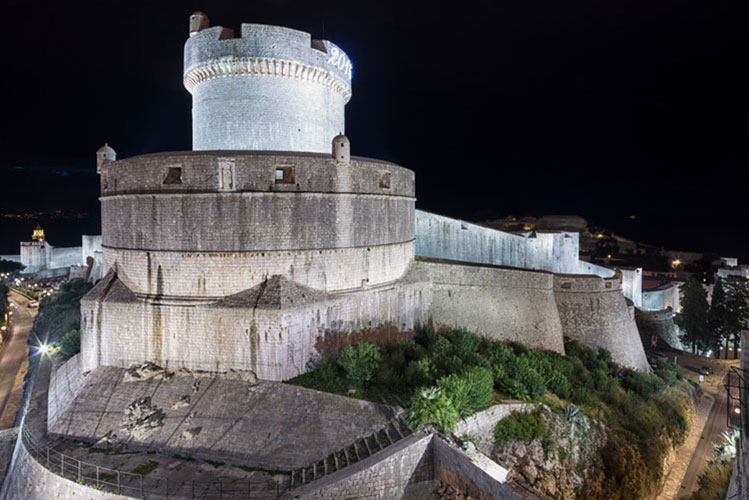
The Minceta Tower is a medieval fortress in Dubrovnik, Croatia. It was built in the 14th century, and it is one of the most famous landmarks in the city. The tower also plays a vital role in the pivotal scenes of the 'Game of Thrones' series. If you are keen on the series, it is where Daenerys goes to look for her stolen dragons.
The tower has been used as a prison, military base, and museum. It is now open to visitors who can climb its stairs to enjoy the view of Dubrovnik from above.
Since it is located at the outermost part of all the towers, it gives visitors a beautiful place to take photographs, especially in the evenings. You only have to brave up and use the stairways to the top. While the flow of visitors moving to the top can be huge, getting there early in the morning or late in the evening will give you a beautiful view.
5. Fort Lovrijenac
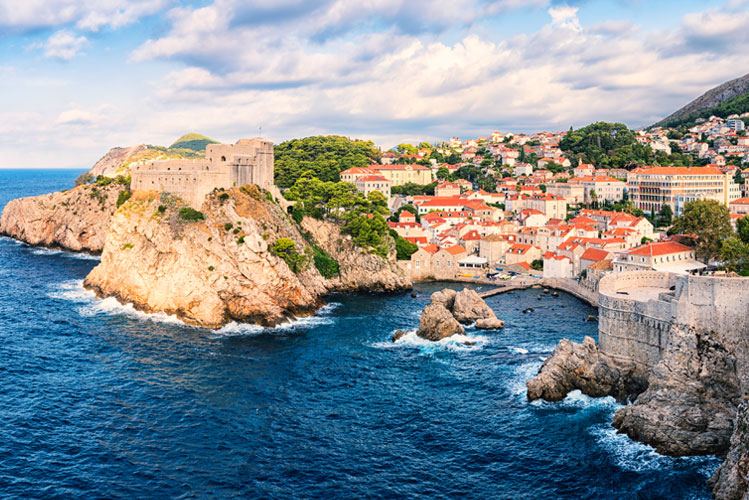
The Fort Lovrijenac is a fortification in Dubrovnik, Croatia.
It was built by the Austrians in the 18th century, and it is located on a hill overlooking the old town of Dubrovnik.
The fort has been used as a prison, military barracks, and ammunition depot.
It was also used as a filming location for
Game of Thrones.
Visiting this fort is an experience that you will never forget.
6. The Dominican Monastery
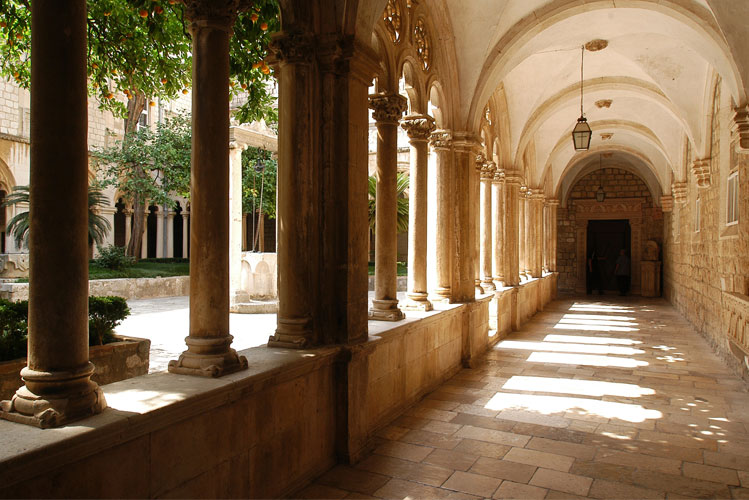
The Dominican Monastery is a monastery in Dubrovnik, Croatia.
It was built in the 13th century and is one of the most important monuments of medieval architecture in Dalmatia. It is located on the eastern side of the old town, near the entrance to Stradun.
The monastery was initially designed by Michelezzo di Bartolomeo of Florence in the 15th century. It has been damaged many times during its history, but it has always been restored as it is a major landmark in the city.
It is a sight to behold.
7. The Museum of Modern Art Dubrovnik
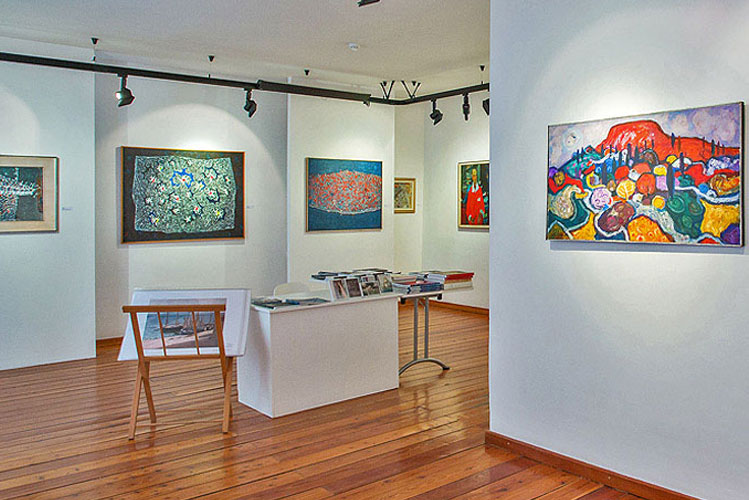
The Museum of Modern Art Dubrovnik was first established in 1945 but reformed in 1979. It is the only museum in the country that specialises in modern art. Commonly abbreviated as MOMAD, it has a permanent collection of over 3,000 works of art (local and international) and hosts temporary exhibitions.
Some of the highlights for visiting MOMAD include the modern artwork and photographs from the 17th century and a huge collection of artwork from the end of the Second World War and after-war timelines. You will also find many modern photos from top Croatian names such as Marko Rasica, Marko Murat, and Niko Miljan. It offers visitors a perfect shot at learning more about Croatian culture, beliefs, as well as history.
8. The Fort of St. John
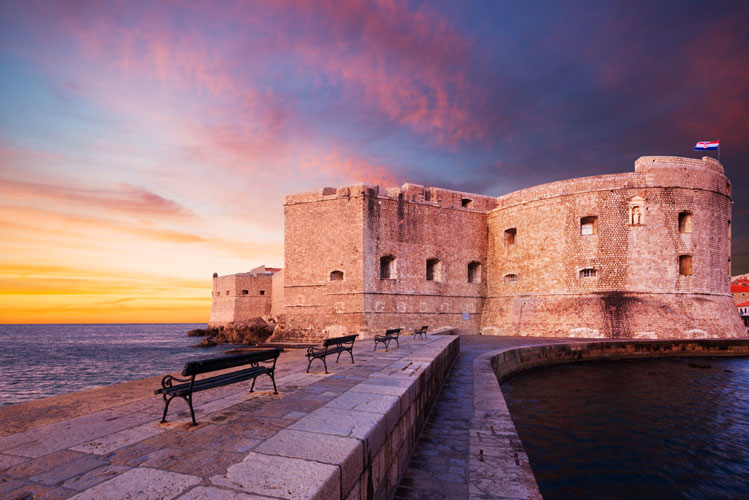
The Fort of St. John is another popular fortress in Dubrovnik, Croatia. It was built in the 16th century, and it is located on the hill of Srđ overlooking the old town. Also known as St. Ivan by the locals, the fort is among the few modern attractions in the city. Most visitors take photos of this fort, and they always turn out beautifully. Don't let the opportunity pass you.
Built in 1537 by the Republic of Ragusa, it was a defence against the Ottoman attacks. The fort was named after John of Austria, who had been sent to Dubrovnik by Emperor Charles V to help defend it from an Ottoman invasion.
Today, it is open for visitors, and there are guided tours available for those who want to learn more about its history and architecture.
While visiting the fort, you should also visit the Maritime Museum of Dubrovnik, which has beautiful Croatian maritime artefacts and displays of exotic and local fishes. What's more? You can also visit Bokar Fort and enjoy beautiful views.
9. Strolling Around Loggia Square
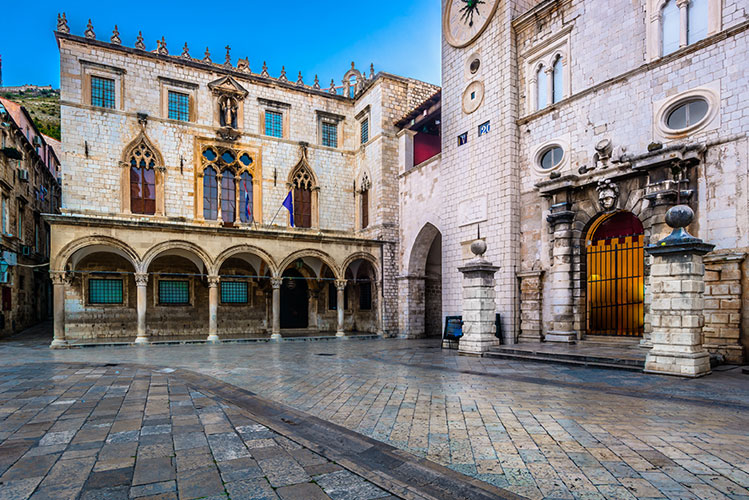
The Loggia Square is a beautiful place to stroll around. It is located in the heart of Dubrovnik, Croatia. The square is surrounded by buildings that are centuries old, and it has a lot of history behind it.
It was built in the 16th century, and it was originally used as a gathering place for merchants and traders. It was also used as an open-air theatre for performances during the summer months.
In the 18th century, the square became a meeting point for people who wanted to discuss politics and social issues.
Today, this square is still used as a meeting point for locals who want to enjoy their coffee or have some ice cream while they chat with friends or family members about what's going on in their lives. It is a beauty to behold. When strolling around, don't forget to carry your camera and capture beautiful memories.
10. Dubrovnik Cathedral and Treasury
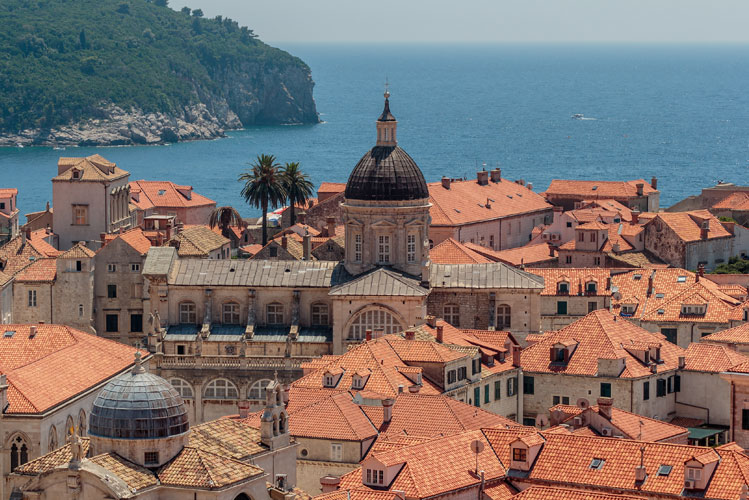
The Cathedral of St. Blaise, also known as Dubrovnik Cathedral, was built in the 13th century, and it is one of the most important landmarks in Dubrovnik. It was built on top of an older church destroyed by an earthquake in 1667.
The cathedral has a Gothic style with Romanesque elements, and it features a large bell tower with two levels.
The Treasury Museum is located inside the cathedral. It contains many valuable items from different periods of history, including paintings, sculptures, coins, jewellery and other items made from gold or silver.
11. The Franciscan Church and Monastery
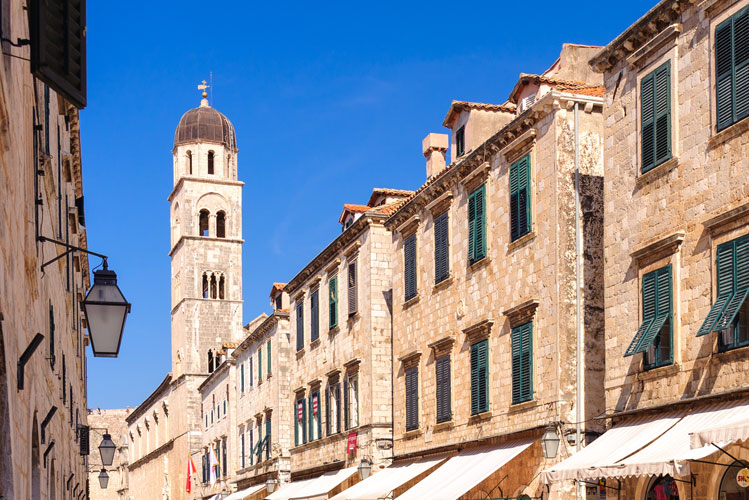
The Franciscan Church and Monastery in Dubrovnik, Croatia, is a beautiful place to visit. It is a place of peace and tranquillity. The Franciscan Church and Monastery were built in the 15th century. The former has been renovated many times, but it still retains its original beauty.
The monastery is located on the top of a hill overlooking the city. The church has an open courtyard with a fountain in the middle that provides water for visitors to drink from. There are also benches around the courtyard where people can sit down and enjoy their time there.
The church itself is huge with two levels inside it, one for men and one for women. There are also many paintings inside that depict the Croatian lifestyle and culture.
12. Riding the Dubrovnik Cable Car
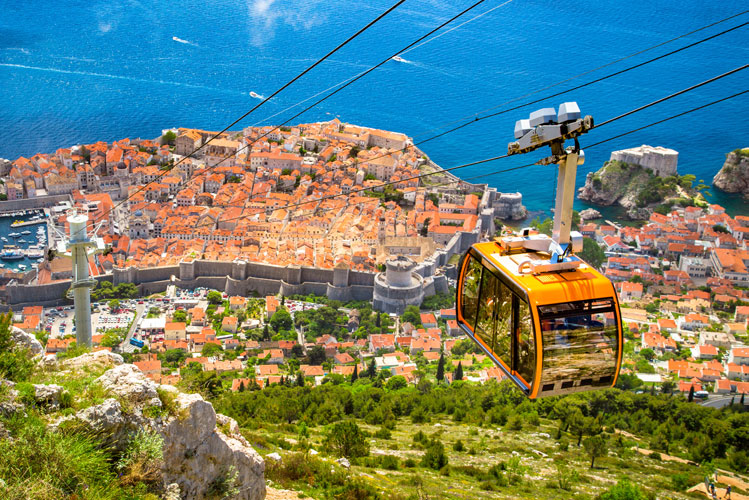
The Dubrovnik Cable Car is a cable car that takes passengers from the Old Town of Dubrovnik to the top of Mount Srđ. The cable car was built in 2006, and it is one of the most popular tourist attractions in Dubrovnik.
The experience starts with a short walk from the Old Town to the cable car station. Once you get there, you will have to wait for your turn as only two cars are operating at any given time. Once it's your turn, you will be able to board one of the two cars and enjoy a scenic ride up Mount Srđ. The ride lasts about 10 minutes, and it offers some amazing views of Dubrovnik's Old Town, Adriatic Sea, and surrounding mountains.
13. Taking a Ferry to the Island of Lokrum

The ferry ride to the island of Lokrum is a short and scenic one. The boat leaves from the Old Town harbour and takes about 10 minutes to reach the island.
Once onboard, you can enjoy a drink or snack while taking in views of Dubrovnik's Old Town, Lokrum Island, and other islands in the distance.
Lokrum Island is home to an old Franciscan monastery built in 1317 by King Louis I of Hungary. It was abandoned for centuries before being restored in 1881 by Queen Maria Theresa of Austria-Hungary.
14. The Large Fountain of Onofrio and St. Saviour Church
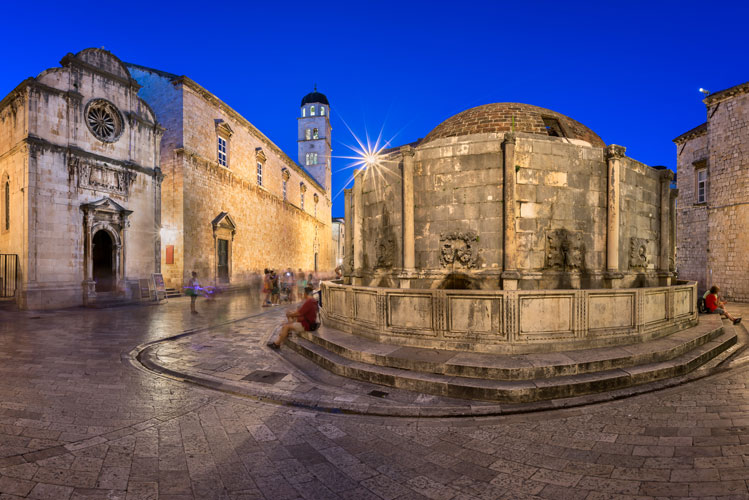
The experience of visiting the large fountain of Onofrio and St. Saviour Church in Dubrovnik is exceptionally memorable. The church is located on the eastern side of the Old Town, and it is one of the most important landmarks in Dubrovnik. It was built in the 16th century, and it has been renovated many times since then.
The church has a beautiful facade with two bell towers on either side. The interior is decorated with paintings from different periods, including works by Tintoretto, Titian, and Rubens. There are also many sculptures inside that were made by Croatian sculptors such as Ivan Mestrovic and Ivan Meštrović.
The large fountain of Onofrio is located just outside the church's entrance gate that you'll be excited to take photos of.
15. The Rector's Palace and Cultural Historical Museum
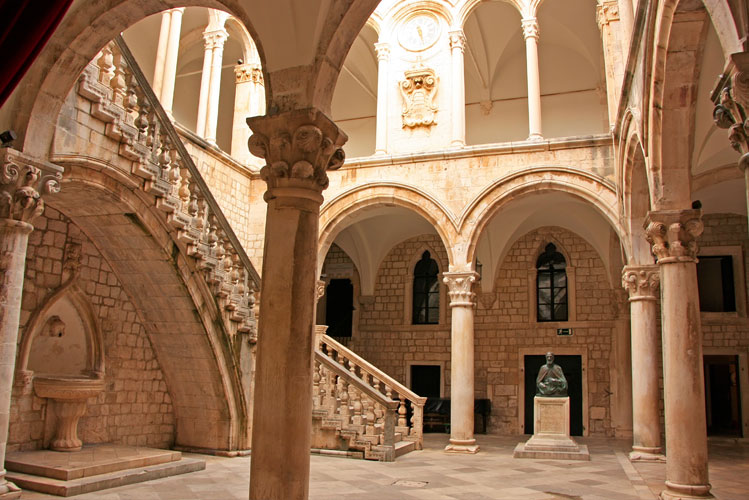
The Rector's Palace is a renaissance building in the city. It was built in the 15th century and served as the seat of the Republic of Ragusa's government. The palace is now a museum, and it houses many artefacts from the history of Dubrovnik. It has an exciting mix of both gothic and renaissance styles.
While it has undergone several damages, its remains are still impressive to tourists. Shortly after its completion, it was damaged by a gunpowder explosion and still survived. Two decades later, it underwent an earthquake strike, which devastated it. Most tourists say that it is well-taken care of the building that's even more exciting to explore.
The Cultural Historical Museum is located in the Rector's Palace, and it has many exhibits that show how life was like in Dubrovnik during different periods. There are also exhibits that show how people lived on different continents before they came to live in Dubrovnik.

